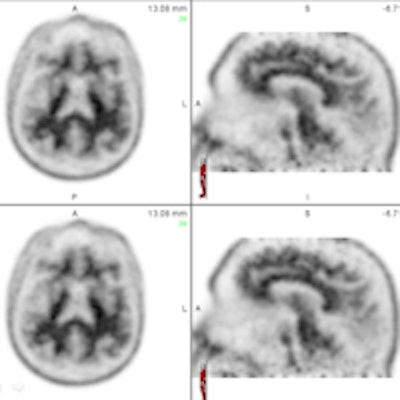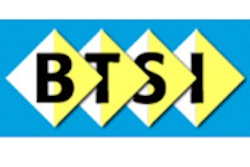
Advances in neurological and cardiac imaging are expected to fuel sales growth in the SPECT and PET radiopharmaceutical markets in the U.S. in the second half of the decade, according to a new market research report from Bio-Tech Systems.
The report, authored by Bio-Tech Systems President Marvin Burns, estimates that U.S. sales of SPECT and PET radiopharmaceuticals could hit $6.45 billion by 2022, reaching more than four times the estimated sales of $1.44 billion in 2014.
Individually, total SPECT radiopharmaceutical sales in the U.S. increased 9.6% to $876 million last year, while PET radiopharmaceutical sales advanced 10.1% to $564 million. The report forecasts that SPECT radiopharmaceutical sales will grow by approximately 5% this year, with PET sales climbing by more than 15% in 2015, as new products exert greater influence over the market.
Burns credited recent approvals of new imaging agents for energizing sales growth and anticipated expansion over the next several years. Specifically, he cited U.S. Food and Drug Administration (FDA) approval of three imaging agents for evaluating neurological disease:
- Amyvid from Eli Lilly for assessing patients suspected of having Alzheimer's disease
- NeuraCeq from Piramal for estimating beta-amyloid neuritic plaque density in adult patients with cognitive impairment
- Vizamyl and DaTscan from GE Healthcare for evaluating dementia
"The approval of the three new biomarkers for Alzheimer's disease and cognitive impairment is a significant accomplishment. It is quite a remarkable thing for the FDA to do that," Burns said. "The negative part of that is that the people in this field have not been able to control the Medicare reimbursement decisions, and so Medicare has taken a narrow view of these kinds of products."
The CMS hurdle
The U.S. Centers for Medicare and Medicaid Services (CMS) has been reluctant to endorse these agents fully, citing insufficient evidence to conclude that PET beta-amyloid imaging improves health outcomes for patients with dementia or neurodegenerative disease.
 Marvin Burns of Bio-Tech Systems
Marvin Burns of Bio-Tech SystemsInstead of paying for all PET scans for dementia or neurodegenerative disease, CMS will reimburse for one PET beta-amyloid scan to exclude Alzheimer's disease through the agency's coverage with evidence development (CED) regulatory framework.
Burns predicts there will be "a compromise before too long," and CMS will eventually craft guidelines on how vendors and practitioners can prove the agents' worth. He recalled CMS' reluctance in the late 1990s and early 2000s to reimburse for PET oncology applications until advocates convinced the agency of the modality's efficacy and how it changed patient management and outcomes for the better.
Eventually, the evidence-based research convinced CMS of PET's efficacy, and the agency began to reimburse for more indications.
"Physicians had to collect this detailed information and conclude after some long period of time and review how PET change diagnoses," Burns said, adding that he sees the same scenario playing out for these imaging agents.
In the meantime, the returns from the neurological biomarkers "for the next two years or so will not be very great, but once they get into the mainstream and there is some common understanding of their value, the reimbursement will be there, and the companies involved will get coverage to offset the development costs," he said.
Cardiology's contribution
The report also names cardiology as a motivator of future radiopharmaceutical growth, as new products for imaging myocardial infarction and congestive heart failure become more widely used.
Burns mentioned two promising catalysts for growth in the cardiology sector: GE's AdreView SPECT radiopharmaceutical, which the FDA has approved for the scintigraphic assessment of myocardial sympathetic innervation, and Eli Lilly's Amyvid, which has shown promise in detecting cardiac amyloidosis, a buildup of protein that can lead to various forms of heart disease.
"PET cardiology imaging is growing in volume and technical sophistication, with the ability to diagnose complex diseases allowing effective therapies at an earlier stage," the report states. "Growth is also expected in cardiology SPECT from new products for imaging myocardial infarction and congestive heart failure."
The PET cardiology imaging segment will also move forward with contributions from Bracco Diagnostics, with its rubidium generator technology, and the completion of Lantheus Medical Imaging's phase III trial of flurpiridaz for PET myocardial perfusion imaging, according to Burns.
The report did caution that the market transition to medical isotopes produced with low-enriched uranium (LEU) will lead to price increases. Because LEU-based isotope production is more expensive than the highly enriched uranium technology currently used, manufacturers will have to increase prices to suppliers, who will pass the costs on to their buyers.




















